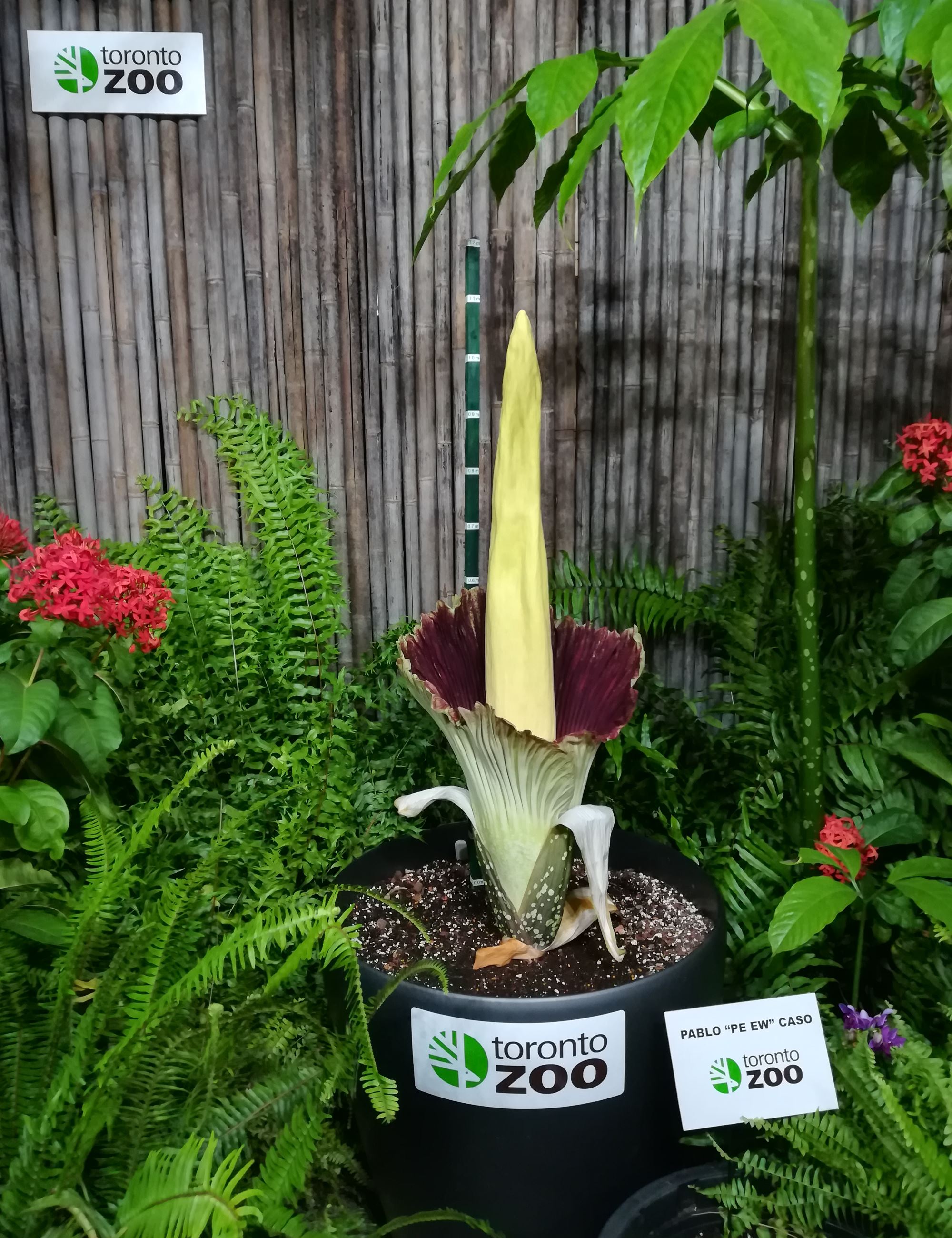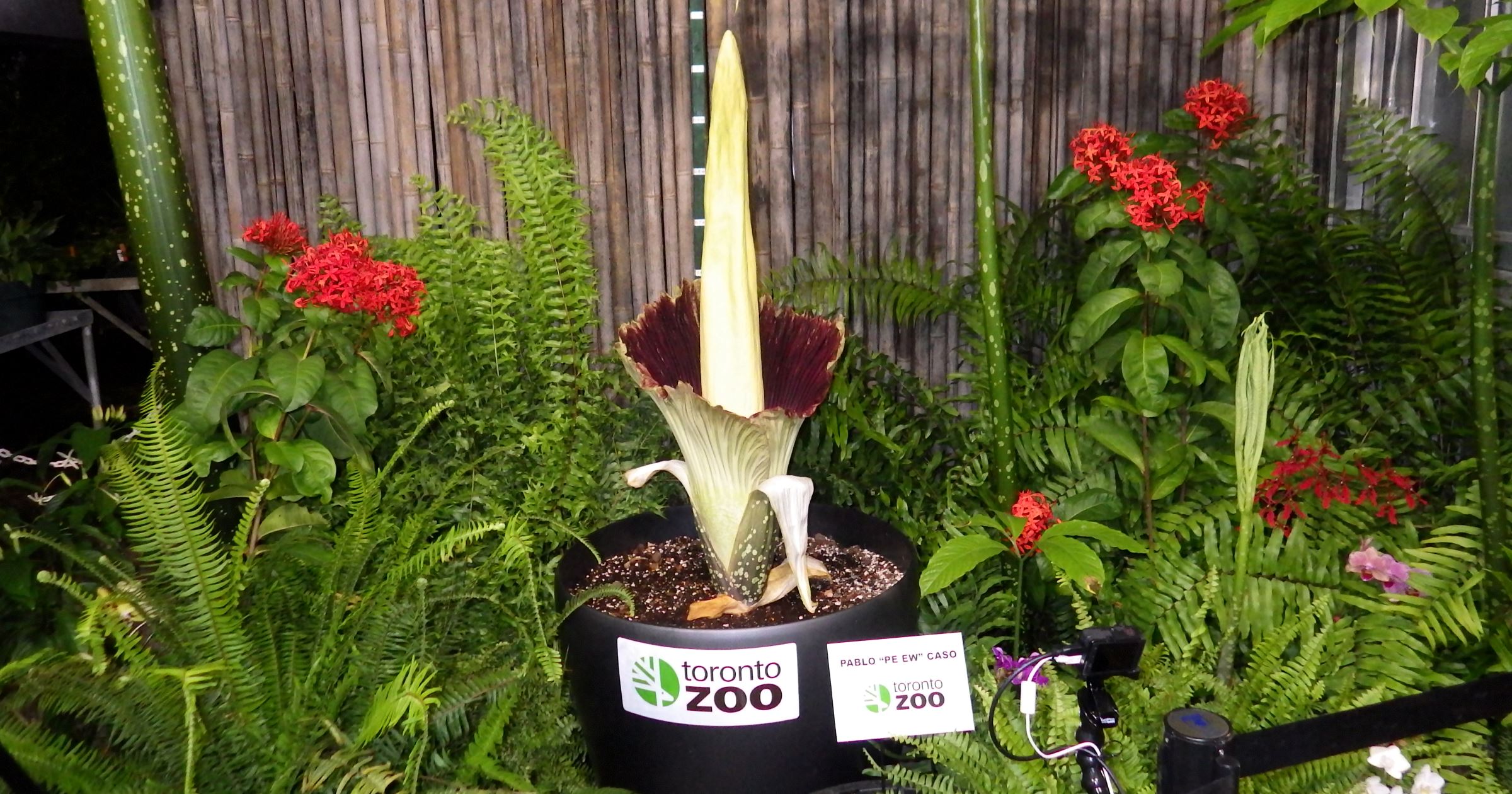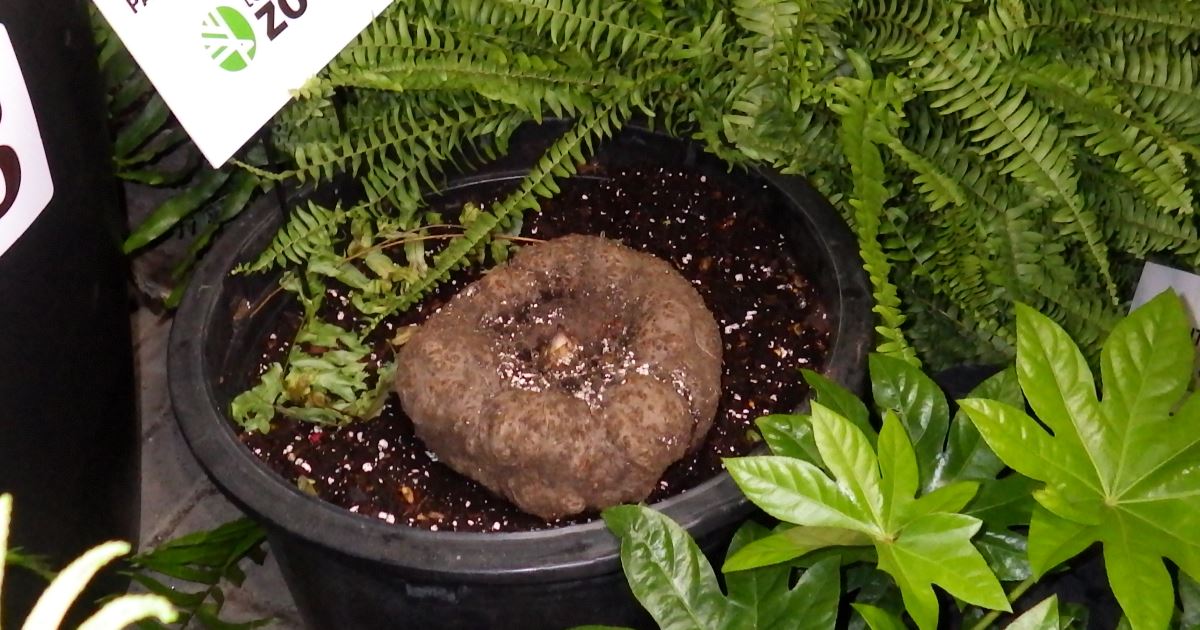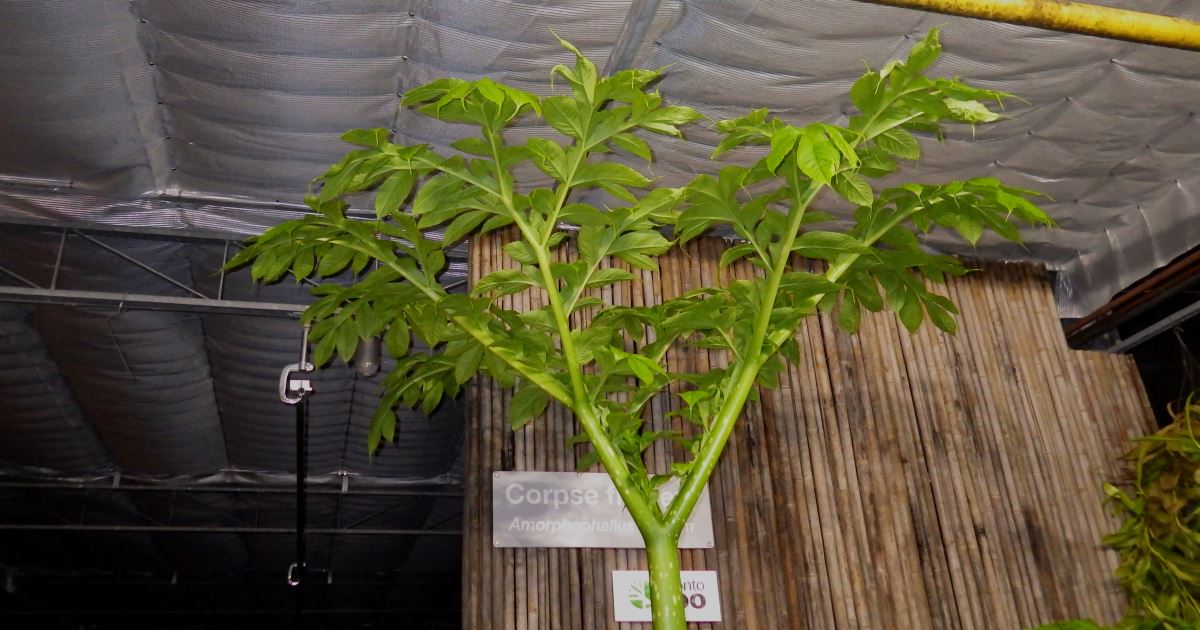Recently there was a rare opportunity to see a flowering corpse flower in the Toronto Zoo.

Corpse flower (Amorphophallus titanum) blooming in the Toronto Zoo.
Native to the rain forests of Java the corps flower, also known as titan arum, produces the largest unbranched inflorescence in the world.
These plants spend a lot of energy in producing their flower parts which is of enormous size and smells like rotten meat to attract carrion beetles that pollinate the plant. The plant will even heat up to make the pretense more realistic. This of course requires a lot of energy that the plant needs to store up before it can produce a flower.
The female parts mature first so the beetles can pollinate it from pollen from another plant, and then the male parts dust the beetles in pollen that they can carry to another plant.
The flowers only bloom for a few hours, so when it started to open the Toronto Zoo has decided to let us curious Torontonians in at night to have a chance to see it. There was really a small party in the hot house, with their stuff explaining everything you ever wanted to know about these plants — and things you did not really need to know. There were also TV crews present filming the rare event.
It often takes up to ten years for a young corpse flower plant, to produce its first flower, and the event is even more rare in captivity. This plant in the Toronto Zoo collection is only about 3 years old, so it is highly unusual to start blooming so young.
When the flower is done all that remains of the plant is a corm which needs to replanish is energy supplies before being able to produce another flower.
The plant typically produces a single leaf sitting on a tree sized stalk. It really looks like a small tree, even though it is just one leaf.
Further Readings:
Amorphophallus titanum (Becc.) Kew Science.
Titan arum videos, photos and facts – Amorphophallus titanum Arkive.
What’s that smell? Rare corpse flower blooms at Toronto Zoo — but it won’t last long CBC News.





